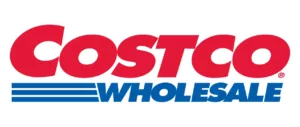I still remember a Saturday lunch rush when a prep cook named Luis quietly pulled me aside. He had been in kitchens for years, but sanitizer test strips, date-marking rules, and glove changes felt confusing when everything was explained only in English.
We enrolled him in a Spanish-language food safety course that afternoon. Two days later, he passed his exam, posted his card, and started reminding everyone to swap cutting boards between cilantro and chicken. The whole line felt steadier, like the kitchen had finally found its rhythm.
If your staff speaks Spanish at home or on the phone, providing them with the same high-quality safety training in their own language is not a perk. It is innovative management. It reduces risk, speeds up inspections, and raises the bar for consistency.
When you choose a well-designed Spanish program, you give your team the tools to understand the “why” behind every rule so safe habits become part of everyday work instead of something they scramble to remember during inspections.
Why Spanish-Language Training Matters For Food Safety
Food safety is more than memorizing temperatures. It is about habits that hold under pressure. Training that speaks the learner’s language makes those habits stick. Spanish-language instruction helps by:
- Turning rules into routines. Time and temperature control, personal hygiene, and cross-contamination steps move from posters into muscle memory.
- Cutting error chains. A missed handwash or a skipped label rarely happens in isolation. Clear lessons in Spanish help prevent minor mistakes from escalating into major problems.
- Speeding inspections. When staff understand expectations clearly, they answer questions with confidence, which leads to faster inspections and fewer corrective actions.
- Building culture. Safety feels like part of the craft, not an extra chore. Experienced team members mentor new hires, and managers spend less time re-explaining basics during the rush.
A structured Food Handler’s Training Course (in Spanish) gives your team a shared foundation. Everyone learns the same concepts, the same temperature ranges, and the same cleaning steps, which leads to a more consistent operation.
Key Elements Of A Food Handling Course in Spanish
A strong Spanish food handling course should cover the exact science and standards as any reputable English program, from basics of foodborne illness to allergen controls. The difference is in how the material is delivered: clear Spanish audio, on-screen text, and visuals that match real kitchen scenarios.
Look for a course that includes:
- Core modules: Foodborne illness and high-risk populations, TCS foods, receiving and storage, preparation and holding, cleaning and sanitizing, allergen awareness, and personal hygiene.
- Real-kitchen scenarios: hot holding on steam tables, cooling soups with ice wands, labeling marinades correctly, and rotating inventory to ensure food is used in a safe and orderly manner.
- Short assessments: Brief quizzes after each section to confirm understanding before moving on.
- Flexible access: Mobile-friendly lessons with progress that saves automatically so staff can study during breaks, commutes, or split shifts.
When these elements come together, learners do not just memorize facts. They see how each rule applies to their station, their tools, and their daily tasks.
Credentials, Cards, And Proof Of Training
Beyond content, you need training that produces proof you can show to inspectors, corporate auditors, or franchise leadership. A good Spanish course should end with a final assessment and immediate documentation.
A reputable provider will issue a food handlers card in Spanish that includes the employee’s name, completion date, and any expiration date required by your jurisdiction. Ideally, the system will also:
- Offer both digital and printable formats, allowing employees to keep a copy at home and managers to keep one on site.
- Provide easy reprints when someone misplaces a card.
- Maintain a central record of completions so supervisors can quickly confirm who is current and who needs renewal.
With reliable documentation, you avoid last-minute scrambles to prove compliance during inspections or internal reviews.
Time, Cost, And Return On Investment
Managers often want to know how much time training will take, how much it will cost, and whether the investment will yield a return. When you choose food handler certification in Spanish from a well-designed provider, the numbers usually work in your favor.
Typical programs:
- Take about 60 to 120 minutes, broken into short modules that fit around busy schedules.
- They are priced modestly per learner, so you can train entire teams without straining the budget.
- Reduce repeat violations, product waste, and re-training time by building stronger habits from the start.
Over time, fewer temperature violations, cleaner logs, and more confident staff result in smoother operations, improved inspection scores, and stronger guest trust.
Rolling Out Spanish Training Across Your Team
A clear rollout plan keeps training from feeling overwhelming. The goal is to integrate it into daily operations rather than treating it as a one-time event. Start with a simple structure and adjust as you see what works for your team.
Consider steps like:
- Reviewing your roster. Identify who is most comfortable in Spanish, what roles they hold, and whether any certificates are already on file.
- Choosing one trusted provider so everyone receives consistent content and exams.
- Setting study windows before or after shifts and splitting longer courses into two sittings for high-volume locations.
- Posting quick-reference charts for temperatures, allergens, and sanitizer checks at relevant workstations.
- Recognizing completion publicly reinforces that food safety is a core part of the job.
As part of that plan, confirm that each new hire earns a valid food handlers certificate in Spanish (or an equivalent accepted credential) before they are scheduled in a food-handling role. This helps set expectations from day one and protects both your guests and your business.
Conclusion: Build A Safer Kitchen With Spanish-Language Training
When cooks and dishwashers learn food safety in Spanish, they do more than pass an exam. They move with confidence on the line, handle food more carefully, and support one another in maintaining high standards.
By implementing a robust Spanish food safety program, planning a straightforward rollout, and scheduling regular refreshers, you foster a culture where safety is consistently visible throughout every shift. The result is cleaner prep, fewer stressful inspection moments, and a kitchen that feels organized and in control from open to close.


















